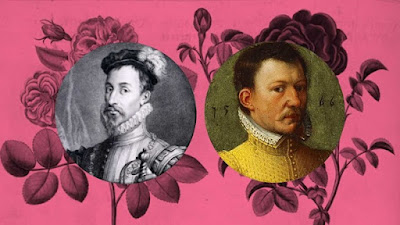The Bridgerton family has nothing on the real-life Elizabeth Chudleigh (1720-1788), a woman who knew what she wanted and how to get it. Her ancestry was noble, but her own family was not particularly wealthy. Her father died when she was a child, and her brother, Sir Thomas Chudleigh, 5th Baronet, was killed while on active duty, leaving Elizabeth and her mother without a protector, someone who could have rebuilt the family fortune, regained their estate, and find a good husband for Elizabeth.
It was Elizabeth's friendship with William Pulteney, 1st Earl of Bath that got her an introduction to court as a maid of honour to Augusta, Princess of Wales, the mother of George III. This position gave young Elizabeth a taste of luxury and she was determined to have it all.
Catherine Ostler's The Duchess Countess (Atria) is a delightful biography of Elizabeth Chudleigh, whose trial for bigamy got more attention in the British press than the American Revolution.
She was smart, stylish, witty, and the inspiration for Thackery's Becky Sharp. She liked being rich and she loved diamonds. Elizabeth also enjoyed her own scandals.
Her first marriage to Augustus Hervey, the future 3rd Earl of Bristol took place in secret, as was the birth of a son who died at age 4 months. Hervey never saw his son. The marriage was not a happy one, but no one (well, nearly no one) knew about it, Elizabeth and Augustus went their separate ways.
Ostler's biography offers a scintillating portrayal of Chudleigh who sought to climb a few rungs in the social ladder as she fell in love with Evelyn Pierrepont, 2nd Duke of Kingston. They met in Berlin where Elizabeth soon became the duke's mistress. It was also becoming clear that her secret husband was soon succeeded to the Bristol earldom, so she forged their marriage details in an entry in the parish register at Lainston.
When Hervey wanted to get a divorce, Elizabeth filed a jactitation order against him, which forced him to stop stating they were married without proof. A court ruled that she was a spinster.
It was a lie of course. Elizabeth continued her merry way, finally marrying the Duke of Kingston. The duke would die, leaving nearly everything to his duchess ... but was she, his duchess?
Eventually, the gig was up. There would be a trial for bigamy as a peeress of the realm. She was found guilty. Always one step ahead of everyone else, Elizabeth absconded to the Continent with her fortune intact.
She would meet Marie Antoinette and Catherine the Great, the latter became a friend and benefactor with Elizabeth acquiring property in Calais and Estonia, and of course rich lovers.
The Duchess Countess is a delightful read and superbly researched. Elizabeth Chudleigh was very much a woman of her own mind. She never understood what reckless meant. She took risks, and she was a survivor.
Elizabeth's life -- Maid of honor to a Princess, a secret marriage, lovers, a duchess, countess, and licentious, which of course appealed to the equally licentious Catherine the Great -- would make a fantastic mini-series that would put Bridgerton to shame. Elizabeth was a real woman, whose 18the-century life was not the norm. Yet, her lifestyle created more attention in the press than that minor rebellion in North America.
A real-life bodice ripper!!!!!!






